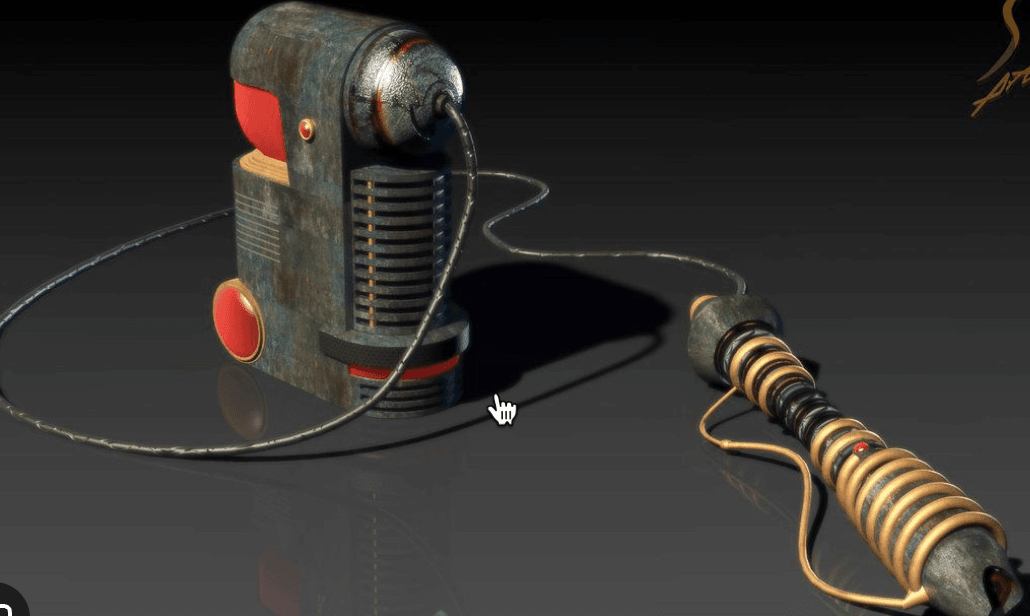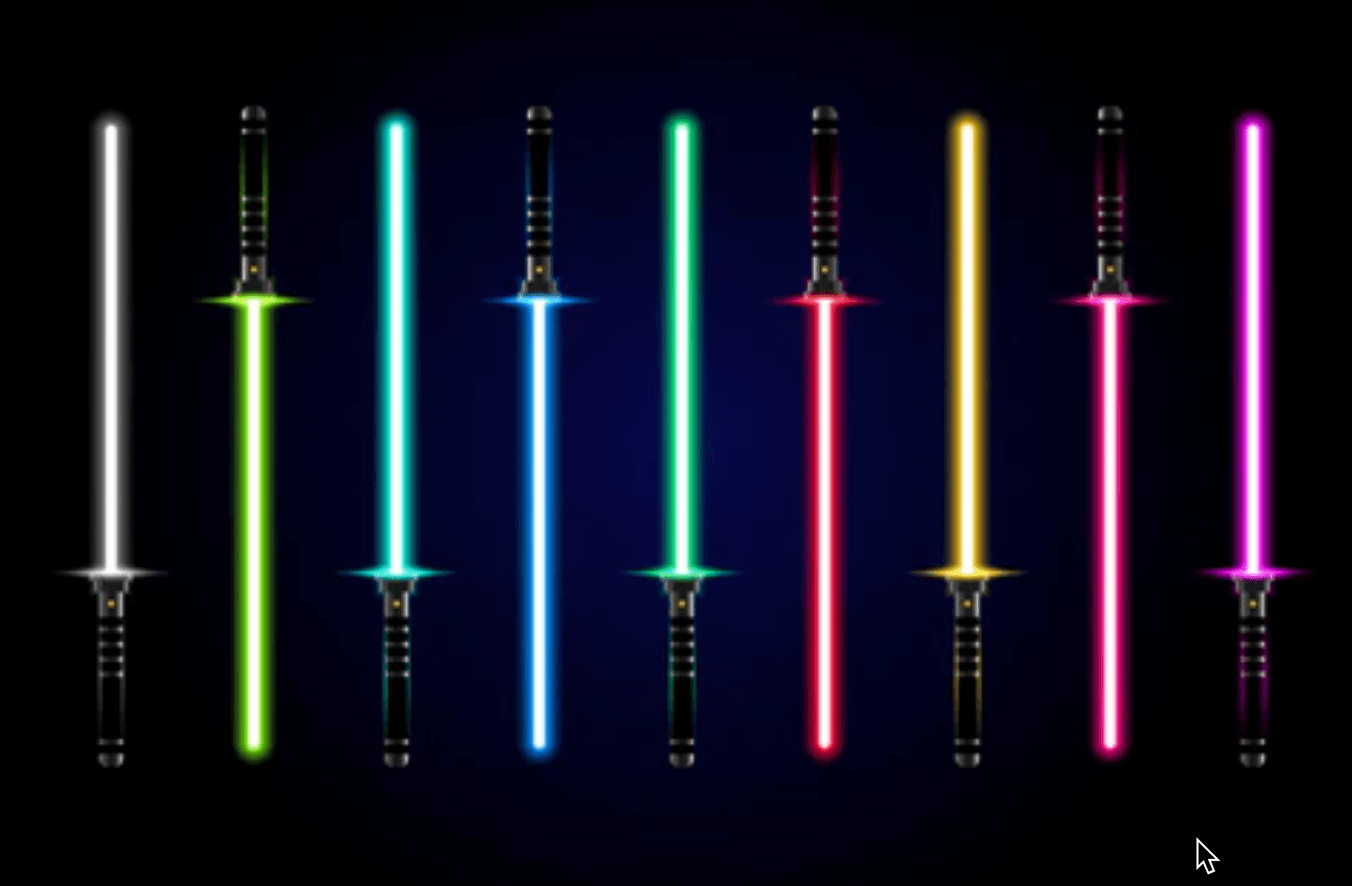The Evolution of Lightsabers: A Journey Through Galactic History
Lightsabers are one of the most iconic weapons in science fiction, symbolizing the power and mystique of the Jedi and the Sith in the *Star Wars* universe. Their history spans centuries, evolving from primitive tools of war to elegant, refined instruments of both peace and destruction. Here, we explore the fascinating evolution of lightsabers, their technology, and how they became synonymous with the epic battle between light and dark.
Proto-Sabers: The Dawn of Energy Blades
Before lightsabers became the weapon of choice for Force-wielders, there were proto-sabers, an early precursor to the modern lightsaber. These early models were bulky, requiring an external power source to function. They were clunky, difficult to wield, and limited in their use due to the need for an energy pack connected by a power cable. While effective in combat, the proto-sabers were hardly practical, but they laid the foundation for more advanced lightsaber designs.

The First Lightsabers: Forged in the Dark Side
The first true lightsabers as we know them today were invented by the Dark Jedi and Sith. Unlike their proto-saber predecessors, these weapons had internal power sources that allowed for far greater mobility and combat efficiency. However, early lightsabers still had their limitations—unstable energy fields and overheating crystals made them dangerous and unreliable at times. Despite these flaws, Sith warriors quickly adopted them, using the power of the dark side to enhance their destructive capabilities.
The Jedi Take Up the Blade
As lightsaber technology advanced, the Jedi began to embrace these weapons, adapting them into symbols of peace and justice. For the Jedi, the lightsaber was more than just a tool for combat—it was an extension of their connection to the Force. During the Old Republic era, Jedi knights perfected the art of lightsaber construction, using carefully chosen Kyber crystals to power their weapons. These crystals were often attuned to the specific wielder, creating a bond between the Jedi and their lightsaber.
Lightsabers became a representation of the Jedi’s commitment to protect the galaxy. Their diverse designs also evolved, from standard single-bladed sabers to double-bladed versions and even lightsabers with crossguards, showing that the weapon’s design could reflect the preferences of individual Jedi.
Color and Meaning: The Significance of Lightsaber Blades
The color of a lightsaber blade became another defining feature, often representing the wielder’s affiliation and inner nature. Blue and green blades were most commonly associated with Jedi, symbolizing peace, knowledge, and the defense of the innocent. In contrast, red blades were the hallmark of the Sith, who used synthetic crystals to create their weapons, representing their aggression, hatred, and lust for power. Over time, new colors like purple, yellow, and even white emerged, each carrying its own significance, hinting at the unique paths of the Force users who wielded them.

The Dark Times: The Fall of the Jedi and the Lightsaber’s Rarity
After the Jedi Order was nearly wiped out during the Great Jedi Purge by Emperor Palpatine, lightsabers became a rare sight in the galaxy. The Sith-controlled Empire actively hunted down any surviving Jedi, and with them, their lightsabers. The lightsaber went from being a common tool of justice to a relic of the past. However, even during this dark period, a few lightsabers managed to survive, kept in hiding by the few remaining Jedi or sought after by those with connections to the Force.
The Return of the Jedi: A New Hope and a New Era
With the fall of the Empire and the rise of Luke Skywalker, the Jedi Order slowly began to rebuild. Luke’s reconstruction of the Jedi Order marked the return of the lightsaber as a symbol of hope and resistance against the dark side. By teaching a new generation of Jedi, he ensured that the art of lightsaber crafting would not be lost. The lightsaber, once again, took its place as a weapon of balance, a beacon of light in a galaxy constantly threatened by darkness.
Modern Lightsabers: The Legacy Lives On
In the post-Empire era, lightsabers continue to evolve both in design and use. Modern-day lightsabers, as seen with characters like Rey and Kylo Ren, reflect not only advancements in their construction but also the changing philosophy of the Force-wielders who carry them. Rey’s yellow-bladed lightsaber and Kylo’s crossguard red saber are symbols of their unique journeys, illustrating how each lightsaber is deeply personal to its creator.
Beyond *Star Wars* canon, lightsabers have become cultural icons, appearing in countless forms of media, from movies to games and fan art. Whether it’s the classic hum of the blade or the dramatic duels that have become synonymous with *Star Wars* films, the lightsaber remains a symbol of power, identity, and the eternal struggle between good and evil.
Conclusion: The Enduring Symbolism of Lightsabers
The evolution of lightsabers is not just a technological progression—it’s a reflection of the ongoing battle between light and dark, order and chaos in the *Star Wars* universe. From their humble beginnings as cumbersome proto-sabers to the elegant, energy-efficient weapons wielded by both Jedi and Sith, lightsabers are more than just weapons—they are symbols of legacy, tradition, and the balance of the Force.
As we continue to explore new stories in the *Star Wars* saga, one thing is certain: the lightsaber will always shine as brightly as the hope for peace in a galaxy far, far away.